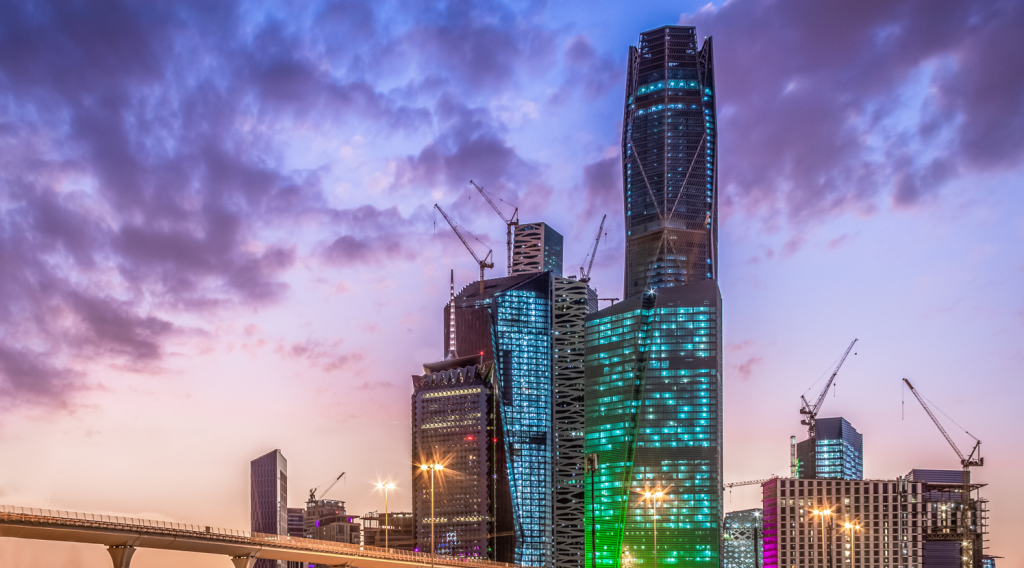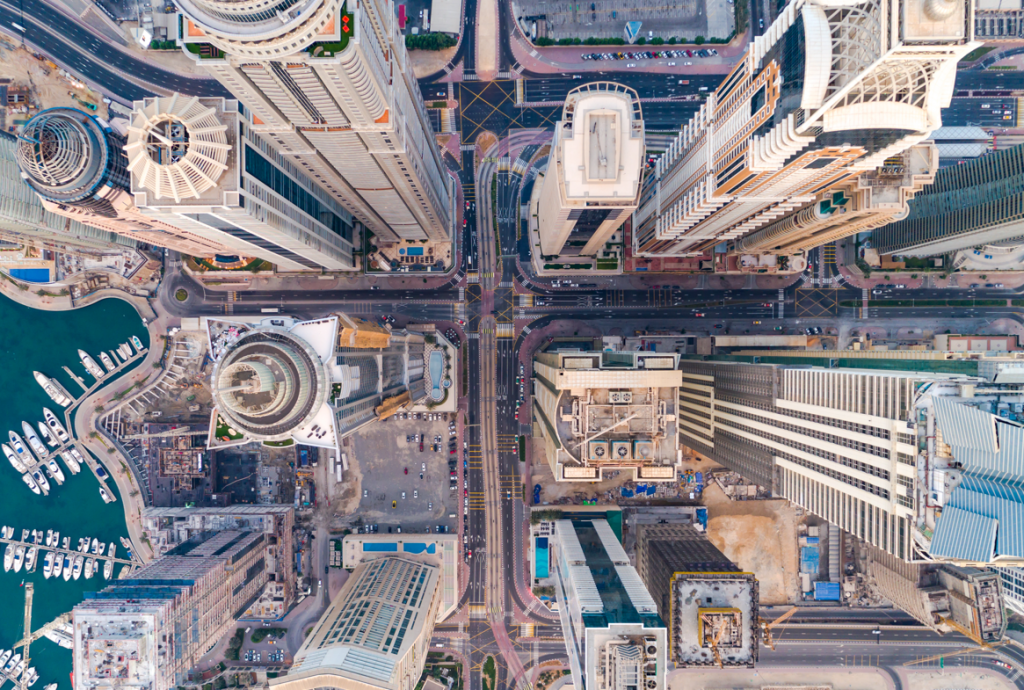By Lindsey Malcolm, Associate Director and Regional Sustainability Lead for Turner & Townsend’s Middle East
At COP 21, The Paris Agreement provided a legally binding international treaty on climate change. In subsequent years, we’ve seen moderate progress in the region regarding the need to mitigate the impacts of human-driven climate change. Following the signing of The Glasgow Climate Pact, the action and activity over these past ten months, has taken a leap forward globally, as awareness and understanding permeates public consciousness.

The majority of GCC countries now have national plans in place, which set net zero ambitions, establish timeframes, and put climate action firmly on the agenda. Whilst these plans have inspiring potential, the challenge is on how to deliver against targets set. In many cases, there is a lack of clarity regarding next steps, a significant gap in existing policy, and limited legislation to drive a net-zero agenda.
Shifting national grids towards cleaner energy generation
The construction industry is responsible for almost 40 percent of global CO2 emissions – through a combination of materials and operational resource consumption. Considering this, we as both industry professionals and as human beings, have a duty to drive change in the market and in user behaviour, to reduce our carbon impact.
Today, energy efficiency is well integrated into most new building designs, supported through code, regulation, and client ambition. Notably, social and economic arguments for enhancing performance in existing buildings, are increasingly becoming as recognised and as compelling as those environmental drivers for change. That said, there remains a limit, as to what can be done to reduce energy consumption within existing built assets, particularly when we consider evolutions in usage demands.
 The Jevons paradox highlights the correlation between increased efficiency and increased resource consumption. When we apply this theory in the construction market, we note a pressing need for the industry to adopt and rollout the use of alternative renewable energy sources. On a positive note, supported by the actions of state managed entities, governmental policies in both the UAE and KSA are shifting national grids towards ‘greener’ approaches to energy generation, with integration of solar and wind systems on the rise.
The Jevons paradox highlights the correlation between increased efficiency and increased resource consumption. When we apply this theory in the construction market, we note a pressing need for the industry to adopt and rollout the use of alternative renewable energy sources. On a positive note, supported by the actions of state managed entities, governmental policies in both the UAE and KSA are shifting national grids towards ‘greener’ approaches to energy generation, with integration of solar and wind systems on the rise.
In the UAE, the introduction of nuclear and the use of hydro power, is reshaping the country’s energy generation along with its energy storage capacity. In KSA, the development of supersized net zero power grids, will supply clean, CO2 emissions-free energy to the Kingdom’s flagship projects, The Red Sea Development and NEOM.
These macro-scale actions on sustainable energy sources, will have significant impacts on the trajectories for both countries over the next 25 years. The challenge, however, is that grid scale interventions take time to implement, require significant capital investment, and furthermore, are required to handle the challenge of balancing demand with generation at a national scale, which can subsequently lead to a need for excess capacity and significant storage.
And while an interconnected regional grid would help mitigate some of these challenges, the reality of this coming to fruition remains a long way off, thus for now, net zero ambitions continue to be primarily addressed at national level.
Urban scale renewable systems
The introduction of urban scale renewable systems, can provide a more immediate impact i.e., provide power and hot water within buildings, help electrify local transport systems, and can work in conjunction with both new masterplan developments and urban regeneration projects.
When delivered alongside other public works or as part of municipal frameworks, the smaller scale deployment of renewable technologies can often be achieved faster and at a lower cost to the state. The choice of technology as well as the operation and storage requirements (needed to balance demand and generation), can be tuned more readily to local community needs, which in turn provides a broader generation mix and improves resilience at a national level.
Emerging strategies for smart cities and new urban developments are integrating faster communication networks and provide opportunity to add renewable technologies into the mix without disruptive impacts. These physical infrastructure enhancements alongside new systems geared towards monitoring, management, and control, are being introduced by cities as part of their ‘smart’ approach towards the rejuvenation of local communities. In existing neighbourhoods, such strategic modifications if delivered concurrently, could be achieved with minimal adverse impact to existing residents, whilst providing an uplift in asset value and longevity.
Urban scale projects in-region not only have a variety of physical contexts, but also have a range of social and economic contexts. This provides opportunity for community scale initiatives, local business action, and innovative ownership models that can drive implementation in different ways. Furthermore, the integration of renewable technologies and energy storage solutions within the public realm, provides opportunity for innovative design thinking and helps to raise public awareness and understanding, which in turn leads to broader dialogue around climate change. When we combine this engagement with a cities transition to sustainable solutions around transportation, waste management, and urban agriculture, a community’s connectivity, ownership, and wellbeing is enhanced and this in-turn paves the way for a broader societal shift towards a net zero economy.
Driving renewable energy generation in the Middle East
The approach of balancing local and national scale renewable energy generation has already been widely deployed in the west and is growing in many other regions. It is proven to add value as part of an integrated national strategy and provides numerous secondary benefits. Whilst there is potential for a more significant uptake in the Middle East, this remains an opportunity waiting to happen.
- Building public awareness is an important first step towards driving change and creating a demand for more sustainable thinking. This of course needs to be backed by suitable financial and regulatory mechanisms that facilitate the purchase, installation, connectivity, and management of urban scale renewable systems (encouraging market entry for new businesses and providing the framework for residents, communities, and others to engage and develop).
- These regulatory mechanisms must streamline the approach with the national power generating authorities, providing a means of connection and integration with existing grid networks.
- Financial balancing mechanisms must also come into play to ensure the value-gain can be realised by all parties.
- Incentivisation can be a strong market motivator, as has been seen in the UK and other areas, but it should not be solely relied on, particularly in this region, where true cost of energy and water isn’t always passed onto the end user. A more robust approach may be to consider the phased introduction and increasing of carbon-based pricing, which would support the business case for urban scale renewable systems in areas they are viable. This approach would also provide funds towards authority or municipal driven approaches such as off-site solutions and infrastructure enhancements.
Ultimately, when considered in conjunction with energy efficiency measures and grid level renewable technologies, urban scale renewable energy systems have significant potential to support growth and balance in national net zero energy strategies.
The conflict between space and demand has meant that historically developments haven’t always integrated urban planning to support such strategies, which naturally makes adding any new layer of infrastructure a challenge. That said, the benefits gained from a well-considered and well deployed approach can overcome such challenge with ease.

